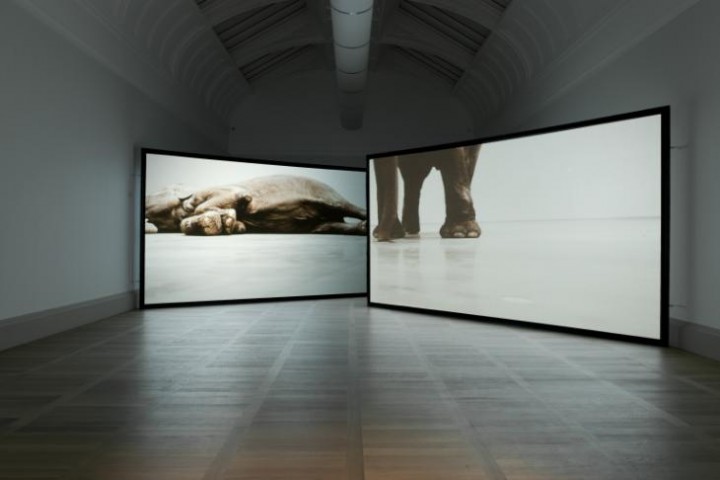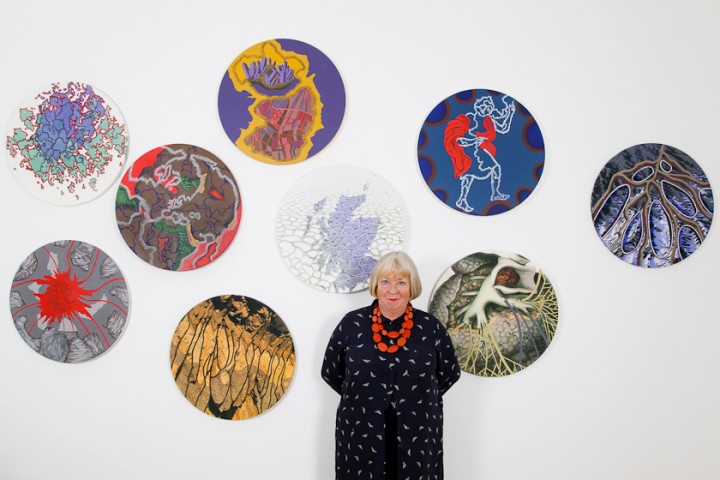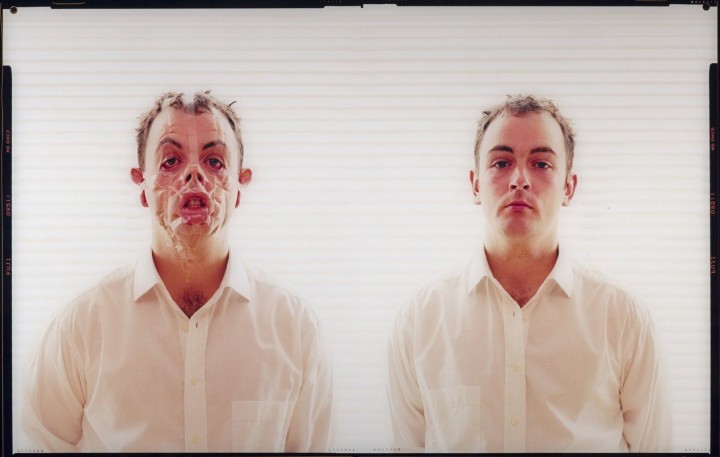Scottish Art News
Latest news
Magazine
News & Press
Publications
My Favourite Scottish Work of Art: Sam Ainsley's Second Choice
By Sam Ainsley, 28.01.2021

For the second in our two part selection of favourite Scottish works of art from Sam Ainsley, the artist turns her eye to the contemporary work of Douglas Gordon, an ex student from the sculpture and environmental art course taught by Ainsley at GSA. Ainsley chose this piece after reading Denise Mina’s favourite work by Simon Starling, another ex student of hers.
"I think I first saw this work Play Dead in New York in 2003, with Kay Pallister and Francis McKee, co-curators of the Scottish Pavilion at the Venice Biennale. Entering the huge Gagosian Gallery space I had no idea what to expect. I became mesmerised and stayed for over an hour though the work was on repeat after 14 minutes (I think?). Two huge double-sided screens at angles to each other showed a life size elephant in the space apparently responding to orders to 'play dead'. So many thoughts assailed me during this (timeless?) time period that I had to write some of them down on returning to our apartment/hotel. These are from some of my notes at the time:
'I felt such a connection watching this giant, gentle creature appear to mimic the death of humans and even understand its significance. Elephants are apparently one of the few mammals (outside of humans) that appear to mourn the dead and dying among them. The close up of its world-weary eyes brought me to tears. It was a riveting and truly moving experience I shall never forget.'
'There was pathos but also understanding in those knowledgeable eyes and the doggedness with which the elephant ‘died’ and rose from the dead again and again; the Christian metaphor might be there also?'
'This is one of my favourite works by Douglas and I cannot summarise my thoughts more truthfully than a quote I know by heart from an audience member of another show of his work in Germany: "Like life itself; full of confusion, tenderness, closeness, pain, sorrow and struggle; persuasive and beautiful". Amen to that. I salute you Mr. Gordon.'"
 Sam Ainsley, install shot. Image courtesy of Comar, 2017.
Sam Ainsley, install shot. Image courtesy of Comar, 2017.
Sam Ainsley (b. 1950) is an artist and teacher and until 2005 was Head of the MFA Programme at Glasgow School of Art. She has forged a remarkable career within the visual arts sector nationally and internationally. From 1985-1991 she taught on the Environmental Art programme under David Harding’s leadership when she then co-founded the Master of Fine Art course. She has since worked collaboratively with Harding and Sandy Moffat on symposia and other events and continues to work independently in her studio. She is a respected and published spokeswoman for the visual arts and her own artwork is in a number of public and private collections nationally and internationally.
Ainsley has exhibited in and curated independent exhibitions and undertaken residencies in numerous institutions and arts organisations across the USA, Australasia, Europe and the UK. Recent presentations of her work include a 2017 solo exhibition at An Tobar Gallery on the Isle of Mull (of which more can be read about here) and two exhibitions in Edinburgh and Glasgow to mark the 30th anniversary of ‘The Vigorous Imagination’, a landmark exhibition held at the Scottish National Gallery of Modern Art in 1987. Ainsley was elected to the Royal Scottish Academy and was inducted into the “Outstanding Women of Scotland” by the Saltire Society in 2017. Glasgow School of Art awarded Ainsley an Honorary Doctorate (D.Litt) for her contribution to art and art education in 2018.
 Douglas Gordon, Monster, 1996-7. © Studio lost but found / Douglas Gordon / VG-Bildkunst, Bonn and DACS, London.
Douglas Gordon, Monster, 1996-7. © Studio lost but found / Douglas Gordon / VG-Bildkunst, Bonn and DACS, London.
Douglas Gordan (b. 1966) was born in Glasgow and studied at GSA and the Slade School of Fine Art, London. His practice is based in numerous media forms, including video, sound, text and found material. Gordan’s work investigates ambiguity and the disruption of the regular way of seeing the world, tinged with a fascination with binary ways of thinking. This on-going engagement with opposites has been attributed to the artist’s interest in Scottish literary history, in which the tension between good and evil is a predominant theme (think Robert Louis Stevenson’s iconic The Strange Case of Dr. Jekyll and Mr. Hyde).
The subject of Gordan’s Play Dead; Real Time is a giant Indian elephant that appears to be preforming to commands to lie on its side before attempting to rise to its feet. The elephant seen in a contained space/screen is reminiscent of circuses, zoos and nature documentaries: all areas where the freedom of nature is controlled by human activity. There is an incapability in the elephant’s actions, never remaining in one state of ‘alive’ or ‘dead’, exploring this impossible polarity, along with that of control versus free will, through one image.
Gordan is one of the most successful of contemporary Scottish artists, exhibiting internationally and winning prestigious art commissions and prizes, including the Turner Prize in 1996 and the Premio 2000 (for young artists) at the Venice Biennale in 1997. He now teaches at the Städelschule, Frankfurt and lives and works in Berlin and Glasgow.
Other artworks in the series 'My Favourite Scottish Work of Art' have been selected by Sam Ainsley, Andrew O'Hagan, Denise Mina, Caroline Walker, John Byrne, Sir James MacMillan, Joyce W Cairns, Sir Tim Rice, Alison Watt, Ian Rankin, Joanna Lumley, Neil MacGregor, Kirsty Wark, Michael Portillo and James Naughtie.




